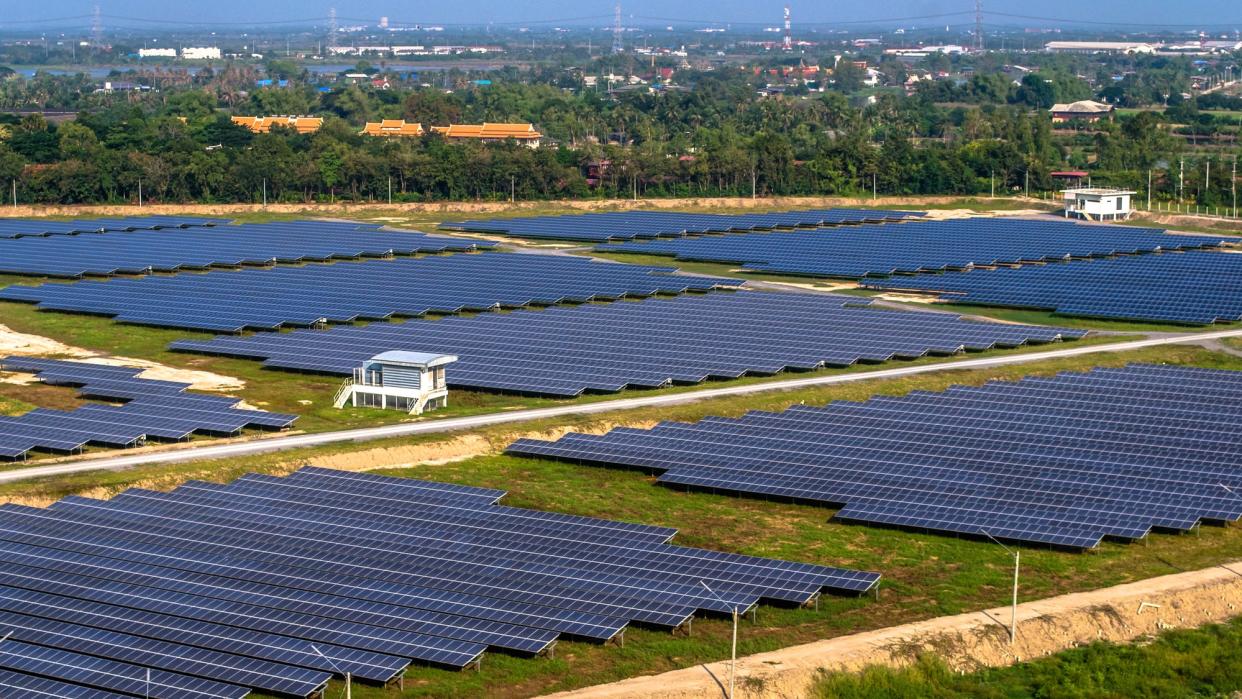Solar power helps keep Europe's grid reliable in historic heat

Solar power is getting its literal and figurative moment in the sun as much of the world is beset by unprecedented, deadly heat waves—thus requiring reliable energy sources to help keep things cool. According to Reuters on Monday, European countries in particular are experiencing the benefits of the robust, rapidly growing green energy infrastructure.
On July 24, for example, Sicily’s stifling temperatures topped 102 degrees Fahrenheit. The region’s solar grid, however, ensured the cooling demands could be met via providing over half of the excess demand totaling around 1.3 GW, per data from financial and infrastructure data provider, Refinitiv. This reliability was bolstered by the major increase year-to-year in the amount of solar energy comprising Spain’s entire electricity output—up from just 16 percent in 2022 to nearly a quarter of the nation’s energy production this year, reports Reuters.
“Without the additional solar, the system stability impact would have turned out much worse," said power analyst Nathalie Gerl.
That same day, Greece’s solar photovoltaic infrastructure covered roughly a third of the nation’s 10.35 GW demand. Meanwhile, solar power has handled the entirety of Belgium’s additional energy demands during midday spikes—typically the time when temperatures are at their highest.
[Related: July’s extreme heat waves ‘virtually impossible’ without climate change.]
The US has yet to reach such a solar stride. According to the US Energy Information Administration (EIA), an independent statistics and analysis group, solar generation composed just three percent of all US electricity in 2020. At this pace, the EIA estimates one-fifth of US energy will come from solar infrastructure by midcentury.
The Biden administration has loftier goals. In 2021, the Department of Energy’s Solar Futures Study indicated that solar energy has the potential to support 40 percent of US electricity consumption while employing roughly 1.5 million people, all without raising consumers’ electricity costs. Such aims are vital as dire climatic events become the new norm for vast portions of the globe.
Regardless, solar grids and their accompanying wind energy arrays grew at their fastest rate in US history last year, for a combined total of 13 percent of all the country’s power, according to USA Today. “Ten years ago that would have been unfathomable. Six years ago, people would have been incredulous," Dan Whitten, vice president for public affairs at the Solar Energy Industries Association, said at the time.

